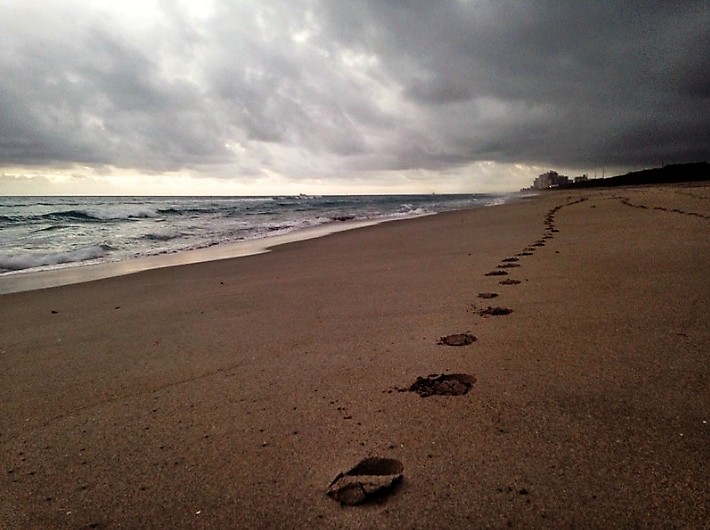
Across Canada and in Brampton, young men gathered before they saved the world
He crouches down in the landing craft and pulls his helmet over his eyes. He’s been in the boat for four hours, holding on like a first-timer on a bucking horse – growing more nauseous by the minute. The roily grey English Channel is angry and ever-surging. It lifts the craft up and plunges it down like it was a small toy in a bathtub. He has nothing in his stomach and doubles over with the dry heaves. He has a slight taste of vomit in his mouth. The commanding officer didn’t give them much information on their mission. They’re heading for the coastline of northwest France. They will storm a beach, take out the Nazis waiting for them there, reclaim a small town in their path, and then establish a beachhead for the others who are to follow.
Focus is the key, said the training officers as they worked them out over those days and months in Blighty. “Think of nothing but your mission and your goals,” they said. “Expunge all extraneous thought. Don’t even let the consolations of religion enter your mind.”
As a good Catholic boy of 19, that’s hard for him to do. In the landing craft, he unbuttons his coat and reaches in to clutch his crucifix. He closes his eyes repeats the training mantra: focus, focus, focus. It’s like he was reciting the 10-times-table in Mrs. Holloway’s Grade 2 class. But he can’t focus. His mind is mazy. He remembers the day he met his girlfriend at the dance at their high school in Wawanesa. She was a real looker, with perfectly coiffed blond hair, and a velveteen smile. He nudges his buddy next to him and asks, “who’s that?”
“Forget it,” he answers. “You haven’t got a chance.”
His mind flips forward to another scene: he’s at the train station in downtown Brandon, a 45-minute drive from the farm, readying to travel and join up with the Royal Winnipeg Rifles. His mother is holding him. She can’t talk – the moment is too enormous. He had to go, and it takes all he has to break her arms wrapped firmly around him. He jumps onboard and only has time to wave at her. He never kisses her goodbye. Oh, if he’d only kissed her goodbye!
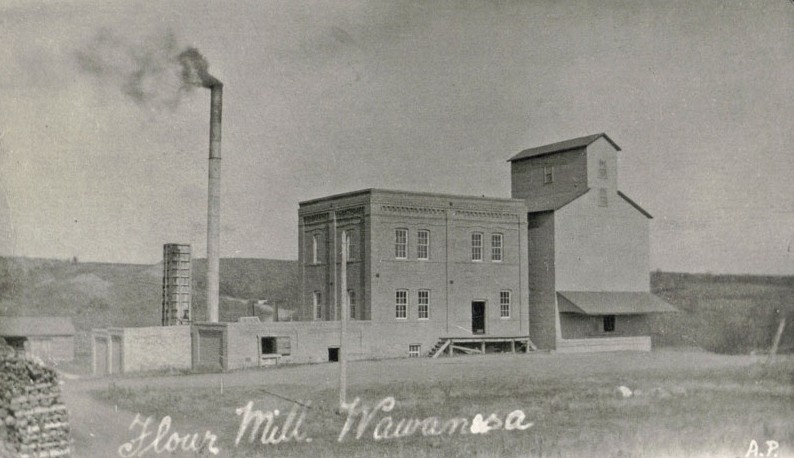
Now he is heading towards the French shoreline. He peeks over the side of the landing craft and sees all the other boats in the water. It is surreal. How many prairie boys get to see this? In the grey mist he spies the beach, and the foamy white waves washing ashore. There are small houses on the cliff, which must be part of the town. Another thought enters his mind: his father, his tough-as-nails dad. “You don’t have to be a freaking hero," he said to him at the train station. "Keep your head down. Come back to us in one piece.”
Focus, dammit, focus, he says, admonishing himself.
His commanding officer stands up and says, “get ready. Keep your rifles dry. Look straight ahead. Follow the man in front of you.”
The door is down and he’s in the water. A wave hits him and his mouth is open. A big gulp of seawater washes down his throat. He’s choking and spitting it out – but not all of it. That awful salty taste will remain with him for the next hour – until he dies.
On the landing craft, his heart is hammering hard in his chest. He remembers his instructor’s advice about breathing evenly, especially in the first few minutes of a battle. “Breathe from your diaphragm into your chest and out through your nose,” he said, demonstrating. He repeats the instruction: Diaphragm, chest, nose. He repeats it 10 times, then does it again.
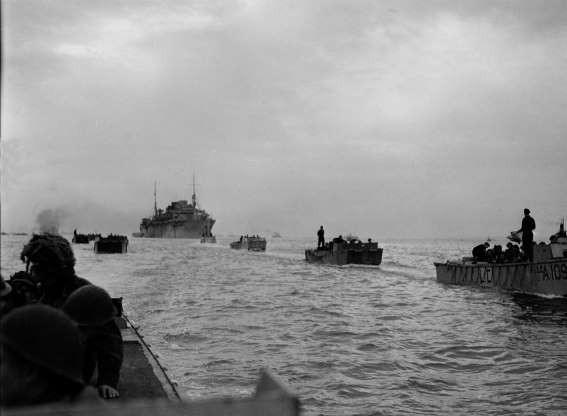
But now he’s chest breathing, stress breathing. His hands are shaking so badly he can hardly hold his rifle.
“Move!” Shouts his sergeant. “Keep moving!”
He stumbles in the water, and almost goes down. He swallows more water. He peeks a look from under his helmet and spies the houses on the heights. Gunfire is raining down from there. He hears the bullets whistling by him. Then the awful thud of one or two or six hitting a man right behind him. Other bullets find human skin. The white water turns a rose colour. He puts his head down, plows forward. He stumbles onto the beach. It’s chaos; engineers cutting the barbed wire, and men stickhandling their way through it. He follows the man in front of him. He feels naked, fully exposed. There’s nowhere to hide. The bullets never stop from on high. A massive explosion sends a wall of sand his way. He covers his eyes; he can’t see a thing. He’s disoriented. Where is his group? He’s concussed, and can’t hear, either. Where is the man in front of him? One of his fellow soldiers goes down on the beach; he has stepped on a mine. He has no legs and is holding his stomach which is pouring out of him. He goes to one knee to help, but within seconds he’s dead. He stumbles forward, maybe 10 yards, and another of his friends is face first in the sand. He falls to the other knee and turns him over. Dead. He’s gasping for breath. Diaphragm. Chest. Nose. But there are two wars going on now: the one on the beach, and the other inside him. His gear is soaked and heavy; all he can taste is salt. His ears start to work again; he hears the rat-tat-tat from the closest machine gun nest but can’t quite locate where it’s coming from. Where are the other men?
Then he feels something he has never felt before. He falls into the sand. He tries to take a breath, but nothing comes. He licks his lips and gets one last taste of salt. Then a silvery silence – and death.
Today is the 75th anniversary of the 14,000 Canadian forces soldiers who landed on the Juno beaches in Normandy. It was the last day on earth for 340 of them. About 450 jumped by parachute or landed by glider. Most came off landing crafts. Over 10,000 sailors of the Royal Canadian Navy were involved. In all, it was the largest amphibious landing in the history of mankind. The massive armada of 7,000 Allied vessels put to sea from Portsmouth, England. The 3rd Canadian Division landed at Juno Beach, led by the 7th Brigade, 8th Brigade, 6th Armoured Regiment and 10th Armoured Regiment. The beach was fronted by the small villages of Courseulles-sur-Mer, Bernières and St. Aubin.
The Canadian objective was to establish a beachhead, capture the three small seaside towns, advance 10 miles inland, cut the Caen -Bayeux highway, seize the Carpiquet airport west of Caen, and form a link between the British beachheads Sword and Gold. Each beach was named after a fish. The Canadians were supposed to land on Jelly. British Prime Minister Winston Churchill thought the name was silly, and not in keeping with a place where so many would probably die. He changed it to Juno. The 3rd Canadian Division progressed further inland than any of the Allies on D-Day. During the first six days of the Normandy campaign, 1,017 Canadians died. By the end of the Normandy campaign, about 5,020 Canadians had been killed. About 5,400 Canadians are buried in Normandy.
The assault was captured on grainy black and white film stock, or in still pictures.
But none truly captured the maw of war, or how those men felt stepping into this slaughterhouse.
The best replication was Steven Spielberg’s Saving Private Ryan, a re-enactment of the American assault on Omaha Beach. The stomach churning opening 28 minutes was so real many of the survivors of the day suffered post-traumatic stress from just watching it.
The script captures this descent into hell.
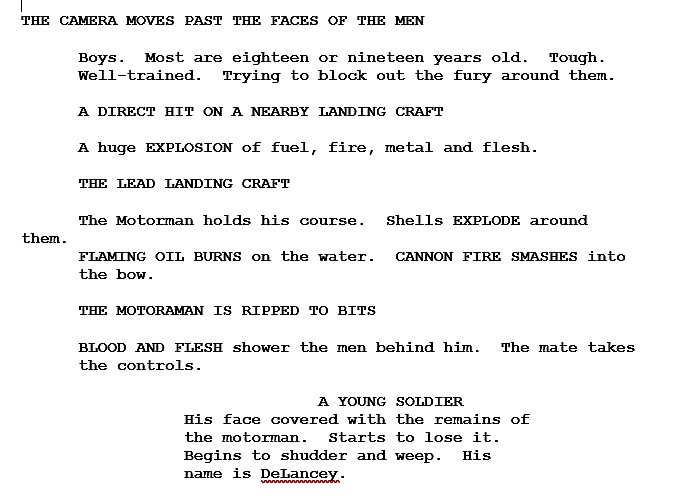
But D-Day wasn’t scripted, or a video game. This had never been tried before. No one really knew how it would all end.
Dante said life is a dark wood, a miasma. He never got to experience modern-day warfare and all its horrors. D-day should have been reported on by Edgar Allan Poe or Stephen King.
Lenin said there would be decades in which history would stand still, and there were weeks when it would move forward by a decade. But what happened here in just one day – June 6, 1944 – propelled the world into a new era instantaneously. It was the beginning of the end of World War II. Today, we celebrate the sacrifices of the men who died and survived, and it will be remembered for a thousand years – if this planet survives that long.
Brampton goes to war
A reporter is standing in front of a lovely old red brick building that sits at 2 Chapel Street. It’s located just south of Queen Street, in the downtown core. It has a plaque on the wall just outside the door which was issued by the Brampton Heritage Board in 1982. It’s called the ‘Old Fire Hall’ and was erected in 1854. Just a year earlier, Brampton was officially incorporated as a village. The population had grown to more than 500 people. Several churches were built, along with a grammar school, distilleries, several stores and John Haggert's agricultural implements factory. The local economy was growing and the village supported the surrounding farms and rural hamlets.
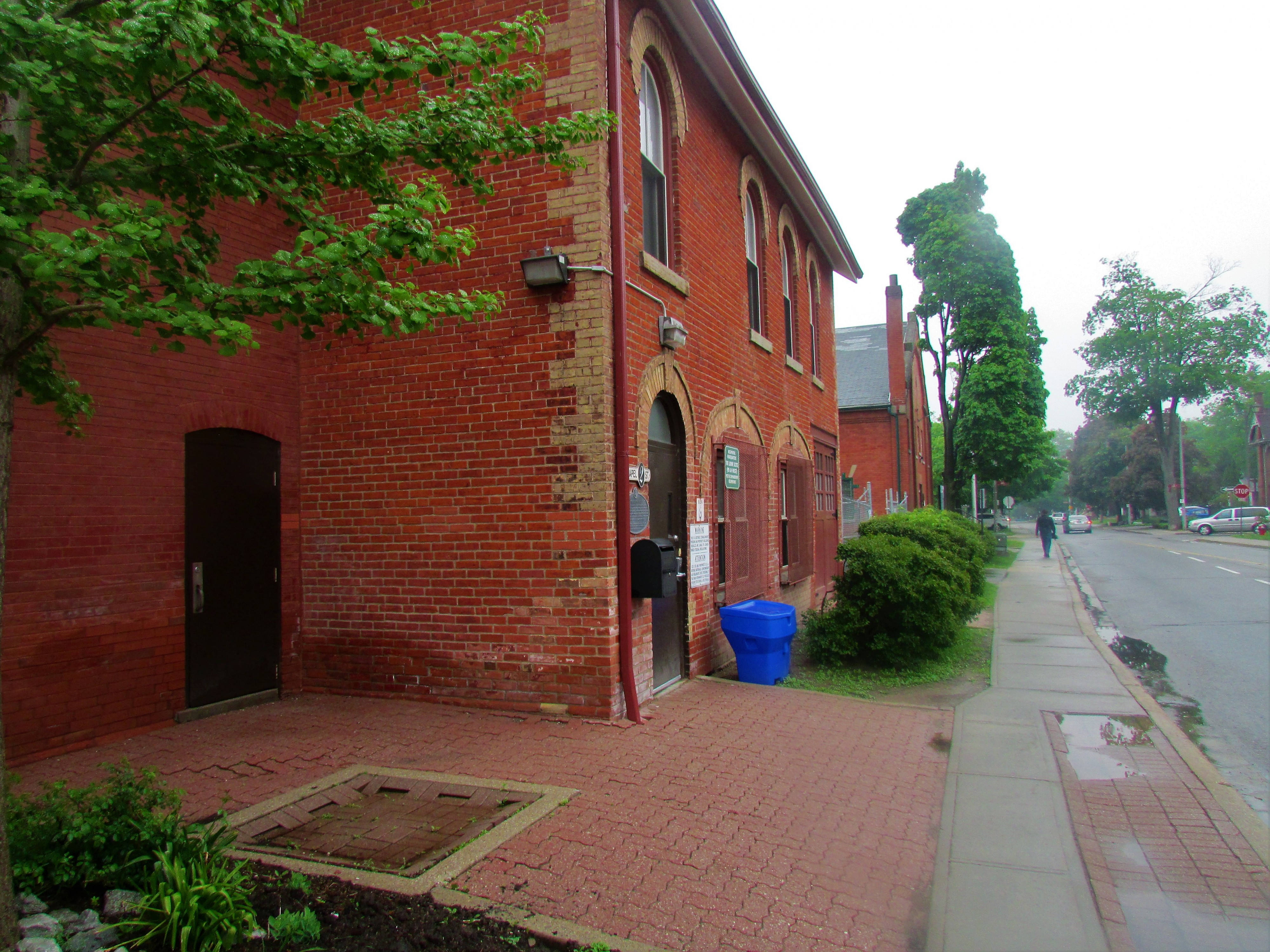
The Lorne Scots building and the Armoury in the background
The building was used as a market and had other usages, including drying out fire hoses. On the second floor, the village council met. It is now home to the Lorne Scots, a Peel, Dufferin and Halton regiment of the Canadian Forces. The Lorne Scots is an Infantry Regiment in the Army Reserve with companies in Brampton, Georgetown and Oakville. As the Army’s primary war-fighters and the core of the combat arms team, infantry soldiers are responsible for closing with and destroying the enemy. Supported by the artillery, regiments of armour and the combat engineers, infantry soldiers are capable of operating anywhere in the world in any environment – arctic tundra, mountains, jungle or desert – and in any combination of arms, including airmobile and amphibious operations. The unit also boasts an impressive Pipes and Drums Band which participates in engagements around the world. Patrolling the halls, replete in his uniform, is Athar Mohiuddin, second lieutenant, adjutant (a high-level logistics planner). The 25-year-old from Milton, is the new face of our military: born in Pakistan, he moved to Canada at age 6, and joined the forces at the age of 23. He has wanted to be in the military since his father and grandfather were members of the Pakistani forces. He started out as a cadet, attended the University of Ottawa, and now handles recruiting, training, and other duties at the Brampton headquarters. In the office next to him is Sgt. Devon Schorr-Bigg of Oakville, a tall, intimidating presence. They work under commanding officer Rick Moyer.
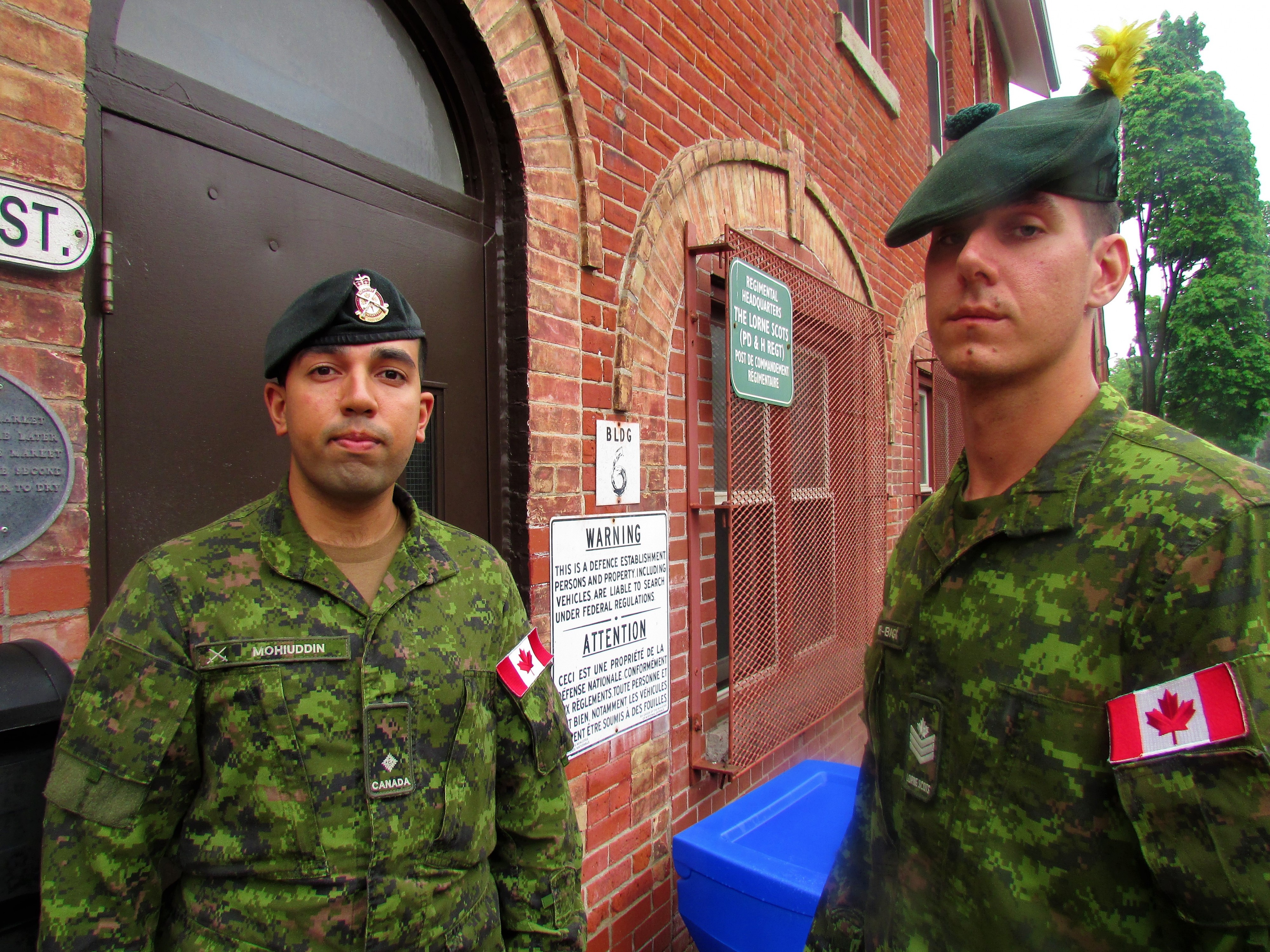
Second Lieutenant Athar Mohiuddin and Sgt. Devon Schorr-Bigg
The Canadian forces today looks nothing like the white, Christian homogeneous units that stormed the beaches of Normandy. They are populated by men and women, and the army, navy and air force has been compressed into one force. The Lorne Scots supply basic training to reservists, and even has a co-op program for students aged 16 to 18 living in its catchment area. Officers like Mohiuddin and Schorr-Bigg go to high schools to talk to the students, and then help them with basic training once they join the co-op program.
Yes, the Canadian forces are a mere shadow of what they were in the run-up to D-Day, but that doesn’t take away from the Lorne Scots headquarters, one of Brampton’s most unique facilities, which also includes the giant Brampton Armoury attached to 2 Chapel. This links Brampton to its military heritage. The Armoury programs have a loose affiliation with the Lorne Scots, and one of the programs offered is the Sea Cadets. They are youth between the ages of 12 and 18, or the Navy League Cadet program from ages 9 to 12. They are volunteer opportunities here, including involvement in the Navy League Committee.
The Armoury is all decked out on parade nights and there is no cost for membership in the Royal Canadian Sea Cadets. Uniforms and training materials are provided. Cadets do take part in fundraising activities, and monies raised are used to provide facilities and services not provided by the Government of Canada, including extra recreational and social activities.
The Lorne Scots have a unique history, and Mohiuddin is happy to chat about it.
The Lorne Scots have been an established institution in Peel, Dufferin and Halton Counties for over 150 years. The Regiment's origin is traced to the 20th Halton and 36th Peel Battalions of Infantry, both raised in September 1866. It originated in Brampton when the '36th "Peel Battalion of Infantry" was authorized to be formed. Early lineage traces back to the War of 1812. Numerous Lorne Scots defence and employment units served in the Mediterranean, North-West Europe and Canada. Today the Regiment continues to defend Canada, and soldiers and officers have participated in nearly every engagement Canada has sent troops to, including: Bosnia, Afghanistan, The Philippines, Ukraine, Jordan, various parts of Africa and even domestic operations such as the 1998 Ice Storm, the G8/G20 Toronto Conference and the 2017 Quebec Floods.
It fought in the two great World Wars, and when it was mobilized in 1941, its role was to provide protective units for the brigades, divisions and corps of the Canadian Army, and for the army headquarters itself. It went to England, where it was dispersed to the many components of the army. To fill its vacancies, soldiers from other regiments augmented the various defence platoons and companies of the Lorne Scots.
In 1942, the brunt of Germany’s war was on its eastern front, and when Russia asked its allies to apply pressure in the west, they agreed to attack the French seaport of Dieppe. This ill-fated maneuver set the stage for D-Day, but it was a lost cause, and many died. Two brigades of the Canadian 2nd Division – the 4th and 6th Canadian Infantry Brigades – were chosen to supply most of the troops, augmented by British commandos. Parts of the two defence platoons went with their respective brigade headquarters, including men from the Lorne Scots. According to the unit’s blog, 50 Lorne Scots were part of a protective platoon at Dieppe, and a number were killed or taken prisoner.
Mohiuddin proudly rattles off the many accomplishments of the Lorne Scots. He understands the significance of June 6th and can only imagine how those soldiers rushing onto the beach must have felt. The significance of what they did that day is part of the training program that is now being passed on to the youth taking part in the cadet programs at the Brampton Armoury, or the co-op students who prep for a military life at 2 Chapel Street.
This quiet continuum is very much felt in the halls of the old Fire Hall building, which takes on added significance today as the entire western world celebrates the accomplishments of the men from “The Greatest Generation,” a descriptor coined by broadcaster Tom Brokaw in his book.
Coming of age in the 1960s and right up to the 2000s, we were given knowledge (deemed to be sacred) that we were the most informed generations, the chosen ones: well fed, well clothed, better educated, idealistic to a fault, and sure to do our depression-era and war-weary parents and grandparents (The Greatest Generation) one better.
But have we?
While the June 6th anniversary brings into sharp focus the unimaginable bravery of the men who stormed those beaches, an Ipsos poll conducted for Global News in partnership with Historica Canada, found most Canadians failed when asked six multiple choice questions on D-Day. Global News reported fewer than half (48 per cent) polled were able to answer three out of the six questions correctly, and 19 percent weren’t able to answer even one question. While 62 percent correctly identify what D-Day was, and 68 percent knew Canada was a participant, only 58 percent knew Adolf Hitler-led Germany as the country the Allies were fighting. Baby boomers were more likely (53 per cent) to get three answers correct than millennials (41 per cent). “I was optimistic for Canadians,” Sean Simpson, vice-president of Ipsos told Global News. “And I was hoping a majority of Canadians would pass the short quiz, but I was slightly disappointed.”
Not so long ago (an average human lifespan), the Allies fought for something much bigger than themselves – the freedom of most of the world. They were charged with turning back the autocratic hordes of evil. The outcome was very much in the balance until the tide began to turn at Stalingrad and on the beaches of Normandy.
These were selfless times. The world was bigger. Our place in it, much smaller.
The men who fought and gave their lives on the Juno beaches left a legacy of serving that continues on in small pockets of our world, including the offices of the Lorne Scots in downtown Brampton, and in the Brampton Armoury. The youth that participate there, look very much like the demographic makeup of our fighting forces today. The ones with names like Athar and Devon.
Today, we toss out stray words like hero and affix them to film stars and pro sports figures.
The word hero should be saved for those who paid the ultimate price for freedom, who served their country, and our world, and ensured that we have the freedoms we now take very much for granted.
D-Day is fading from our memory, like the names of the men who participated in it and now lay under white crosses in the nearby graveyard.
Most rest at Beny-sur-Mer Canadian War Cemetery. They will be visited less often, as today's heightened awareness of the 75th anniversary dwindles away.
Yes, the Greatest Generation was well-named.
Submit a correction about this story


